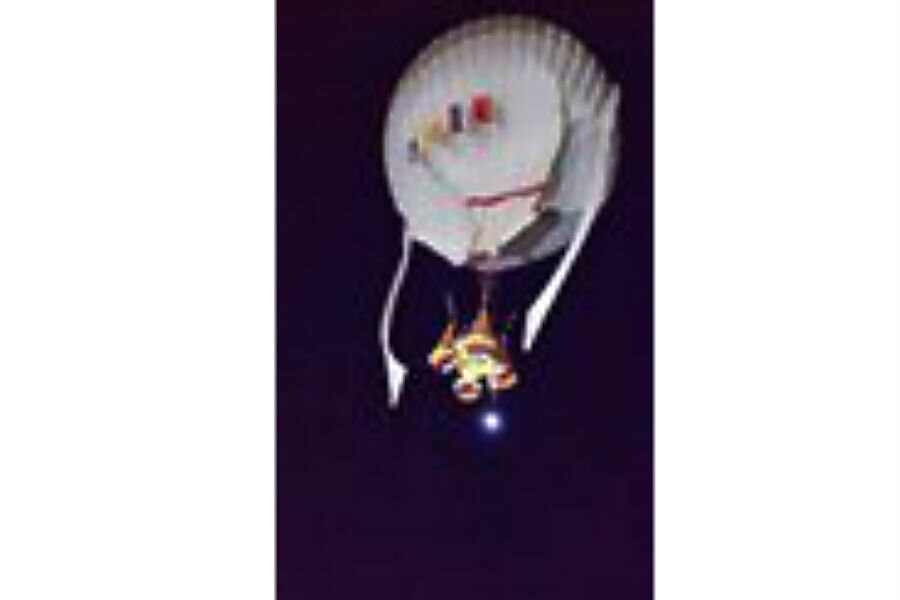Trans-Pacific balloon trip: Like 'camping in the sky'
Loading...
| Albuquerque, N.M.
An international team is piloting the helium-filled Two Eagles balloon across the Pacific Ocean in an effort to break a pair of major ballooning records.
Five things to know about the challenge:
THE GOAL. Accomplished balloon pilots Troy Bradley, of Albuquerque, and Leonid Tiukhtyaev of Russia, launched from Saga, Japan, early Sunday Japan time. They're aiming for the shores of North America, an attempt that will put them on course to break a distance record of 5,208 miles that has stood for more than three decades. They're also looking to break the flight-duration record set in 1978 when Ben Abruzzo, Maxie Anderson and Larry Newman made the first trans-Atlantic balloon flight. That record of 137 hours in the air in a traditional gas balloon is considered the "holy grail" of ballooning achievements.
LIFE IN THE CAPSULE. Bradley has likened the journey to a camping trip in the sky. The balloon's capsule is about the size of a large tent — 7 feet long, 5 feet wide and 5 feet tall, which leaves the pilots little room to move around. Since they're flying at an altitude of at least 15,000 feet, they have oxygen masks and are bundled up to cope with the 50-degree temperature inside the capsule. They have sleeping bags and a small onboard heater. The balloon is also equipped with a simple toilet.
FOOD AND DRINK. Packing required the pilots to be thorough since they would be on their own after lifting off. They have freeze-dried meals, fresh fruit, beef jerky and energy bars, along with lots of water to stay hydrated. They also have a small stove for occasional hot meals. Because of the altitude and the inability to move around, however, they don't have large appetites.
THE VIEW. Bradley and Tiukhtyaev have been sharing photos of the view from their carbon composite capsule via social media. Some show the sun peeking over the Earth's curve, while others show part of the balloon and spotty clouds covering an ocean of blue tens of thousands of feet below.
LIVE TRACKING. The team has been in constant communication with mission control, and updates on the balloon's location are being posted to social media sites, including Twitter. The team's exact destination in North America is not known because the location will depend on the winds the balloon encounters along the way. As of early Wednesday, the balloon was about 960 miles northeast of Hawaii — traveling about 60 mph at an altitude of more than 16,000 feet.





